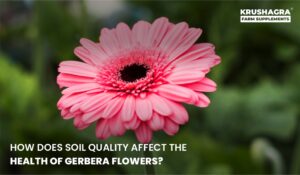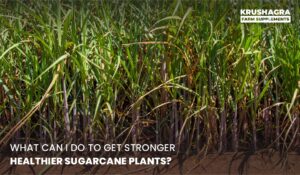Introduction
Sustainable farming practices are becoming increasingly important in our quest for a greener and healthier planet. As we face the challenges of climate change and environmental degradation, it is crucial to explore innovative techniques that promote agricultural sustainability. One such technique is the use of biofertilizers for nitrogen fixation, which has shown great promise in enhancing the growth and productivity of sunflower and horticulture plants. In this blog post, we will delve into the significance of biofertilizers and their potential to revolutionize sustainable farming.
Understanding Nitrogen Fixation
Nitrogen is an essential nutrient required for plant growth and development. While the atmosphere is abundant in nitrogen gas (N2), it is not directly usable by most plants. Nitrogen fixation is the process by which nitrogen gas is converted into a usable form, such as ammonia (NH3) or nitrate (NO3-), through the activity of nitrogen-fixing bacteria. These bacteria form a symbiotic relationship with certain plant species, facilitating the conversion of atmospheric nitrogen into a form that can be readily absorbed by plants.
The Role of Biofertilizers
Biofertilizers are formulations that contain live beneficial microorganisms, including nitrogen-fixing bacteria. When applied to soil or plant surfaces, biofertilizers introduce these microorganisms into the agricultural ecosystem, enhancing soil fertility and promoting plant growth. They offer a sustainable alternative to synthetic fertilizers, which can have detrimental effects on the environment and human health.
Benefits of Sunflower and Horticulture Plants
Sunflower and horticulture plants, such as vegetables, fruits, and flowers, play a crucial role in sustainable farming systems. These plants have high nitrogen requirements for vigorous growth and production. By harnessing the power of biofertilizers, farmers can ensure a steady supply of nitrogen to these crops without relying on synthetic fertilizers. This not only reduces the environmental impact but also lowers input costs for farmers.
Advantages of Biofertilizers for Nitrogen Fixation
Increased Nutrient Availability: Biofertilizers help improve the nutrient availability in the soil by facilitating the conversion of atmospheric nitrogen into a form that plants can readily absorb. This promotes healthy plant growth and higher crop yields.
Environmental Benefits: Unlike synthetic fertilizers, biofertilizers are eco-friendly and do not contribute to soil degradation or water pollution. They support a sustainable agricultural system by reducing the release of greenhouse gases and minimizing nutrient runoff into water bodies.
Soil Health and Fertility: Biofertilizers promote the growth of beneficial microorganisms in the soil, improving its structure, fertility, and water-holding capacity. They also suppress the growth of harmful pathogens, reducing the need for chemical pesticides.
Cost-Effectiveness: By utilizing biofertilizers for nitrogen fixation, farmers can reduce their dependency on expensive synthetic fertilizers. This leads to cost savings and increased profitability in farming operations.
Application of Biofertilizers
Biofertilizers can be applied in various ways, depending on the crop and farming system. For sunflower and horticulture plants, the most common method is seed inoculation, where the biofertilizer is applied directly to the seeds before sowing. Alternatively, biofertilizers can be applied through soil drenching, foliar spraying, or irrigation systems. It is essential to follow the recommended dosage and application guidelines provided by the biofertilizer manufacturer for optimal results.
Seed Inoculation: Seed inoculation is a popular method for applying biofertilizers to sunflower and horticulture plants. In this method, the biofertilizer is applied directly to the seeds before sowing. The seeds are coated or treated with the biofertilizer, ensuring that the beneficial microorganisms come into direct contact with the young roots upon germination. This allows for efficient colonization of the plant’s root system by nitrogen-fixing bacteria.
Soil Drenching: Soil drenching involves applying the biofertilizer solution directly to the soil around the base of the plants. This method ensures that the beneficial microorganisms come into contact with the root zone, promoting their establishment and nitrogen-fixing activity. Soil drenching can be done during the early stages of plant growth or at regular intervals throughout the growing season, depending on the specific crop requirements.
Foliar Spraying: Foliar spraying involves applying the biofertilizer solution directly to the leaves of the sunflower and horticulture plants. This method allows for rapid absorption of the nutrients by the foliage, bypassing the root system. While foliar spraying is not the primary method for biofertilizer application, it can be used as a supplementary approach to provide additional nutrients and enhance plant growth.
Irrigation System: Biofertilizers can also be applied through irrigation systems, such as drip irrigation or sprinklers. The biofertilizer solution is mixed with water and distributed evenly across the field during irrigation. This method ensures uniform distribution of the beneficial microorganisms throughout the soil, reaching the root zone of the sunflower and horticulture plants. It is particularly useful for large-scale farming operations.
It is important to note that the application of biofertilizers should be done following the recommended dosage and application guidelines provided by the biofertilizer manufacturer. Proper timing and application technique are crucial to maximize the benefits of biofertilizers on sunflower and horticulture plants.
Additionally, it is advisable to conduct soil testing and consult with agricultural experts to determine the specific nutrient requirements of the crops. This will help in optimizing the application of biofertilizers and ensuring that the plants receive adequate nutrients for healthy growth and optimum productivity.
In conclusion, the application of biofertilizers on sunflower and horticulture plants can be done through seed inoculation, soil drenching, foliar spraying, or irrigation systems. Each method offers unique advantages and can be tailored to suit the specific crop and farming system. By adopting these techniques, farmers can enhance nutrient availability, promote sustainable farming practices, and contribute to the future of agriculture.





